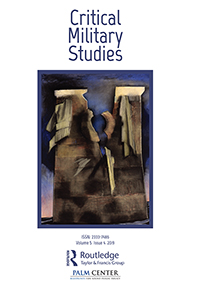By Mathias Delori

A number of Western countries such as the United States, Britain and France have been waging war continuously since the ‘terrorist’ attacks of 11 September 2001. Although these wars have resulted in a massive loss of life, only a few scholars have tried to understand the determinants and motives behind this violence. This article aims to shed some light on this blind spot by studying the interpretive ‘frames’ (Judith Butler) that mediate the Western military’s relation to violence. It does so by relying on a qualitative inquiry with the French airmen who bombed Afghanistan (2001–2011), Libya (2011) and Mali (2013). The article argues that the classical explanation in terms of ‘de-humanization’ is only partially heuristic. Indeed, airmen sometimes see the human ‘face’ – in Levinas’ term – of the people they kill, and these moments of ‘recognition’ do not alter their will to wage war and drop bombs. I explain this apparent paradox by relying on Eyal Weizman’s notion of ‘humanitarian violence’.
Published:
Critical Military Studies 5 (4), 2019
DOI:
doi.org/10.1080/23337486.2017.1401827
Online available:
www.tandfonline.com
PDF:
Humanitarian violence. How French airmen kill or let die in order to make live
(1.45 MB)